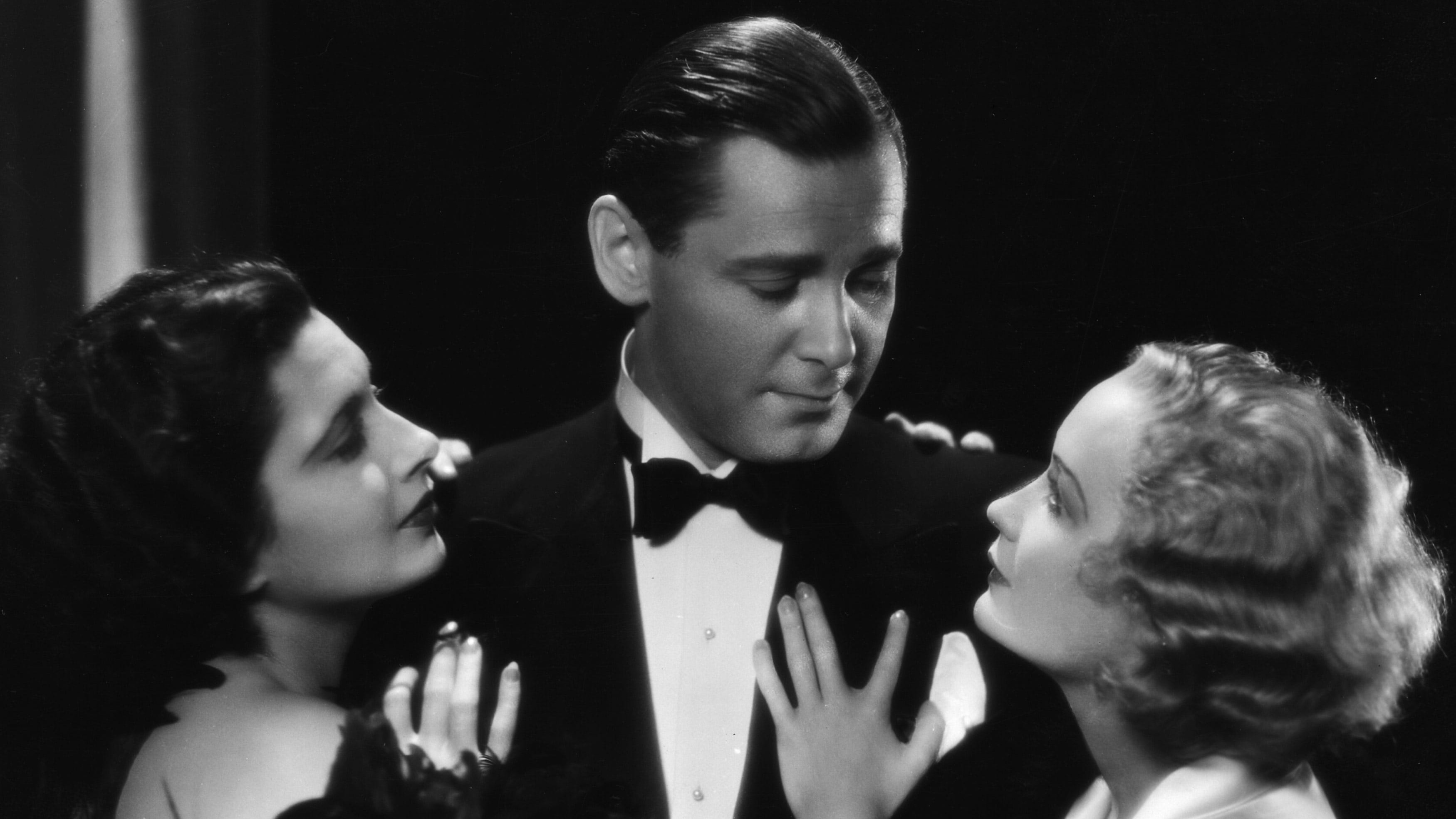TROUBLE IN PARADISE (1932)


6:00 PM, Thursday April 28
Premiere: Introduced by Ivan Cerecina
11:00 AM, Friday April 29
Randwick Ritz
Director: Ernst Lubitisch
Country: USA
Year: 1932
Runtime: 83 minutes
Rating: G
Language: English
TICKETS ⟶
Premiere: Introduced by Ivan Cerecina
11:00 AM, Friday April 29
Randwick Ritz
Director: Ernst Lubitisch
Country: USA
Year: 1932
Runtime: 83 minutes
Rating: G
Language: English
TICKETS ⟶
“TROUBLE IN PARADISE IS GENERALLY CONSIDERED PRODUCER/DIRECTOR ERNST LUBITSCH’S GREATEST FILM” – FILMSITE
Made only three years after the introduction of the “talkies”, this sophisticated jewel-thief romantic comedy feels like it could have been made yesterday.
Set in Venice and Paris, it’s all evening dress, opera, jewelry, nightclubs, butlers, grand hotels and a suave, sexy triangle between two thieves and the perfume company executive they plan to rob.
Exquisitely directed by Lubitsch, there isn’t a false note in the entire film.
“[Lubitsch] could do more with a closed door than other directors could do with an open fly.” – Billy Wilder
Introduced by Ivan Cerecina, Lecturer in Film Studies at the University of Sydney.
Made only three years after the introduction of the “talkies”, this sophisticated jewel-thief romantic comedy feels like it could have been made yesterday.
Set in Venice and Paris, it’s all evening dress, opera, jewelry, nightclubs, butlers, grand hotels and a suave, sexy triangle between two thieves and the perfume company executive they plan to rob.
Exquisitely directed by Lubitsch, there isn’t a false note in the entire film.
“[Lubitsch] could do more with a closed door than other directors could do with an open fly.” – Billy Wilder
Introduced by Ivan Cerecina, Lecturer in Film Studies at the University of Sydney.
FILM NOTES
By Geoff Gardner
Ernst Lubitsch:
Lubitsch (1892-1947) began in the film industry
as an actor and then worked as a director from his early twenties. In Germany he
had made more than fifty silent films including the international hit costume
dramas Madame Dubarry, Carmen, Anna
Boleyn and Sumurun. By 1921 he was in
Dave Kehr’s words ‘the most acclaimed director in Europe” and he accepted an
invitation from “the most popular actress in America, Mary Pickford” to come to
the States to direct her in Rosita in
1922. In America he made twenty-seven
films (and in 1934 spent a year as head of production at Paramount) before dying
of a heart attack at the age of 55.
Much has been made of the so-called ‘Lubitsch touch’ and many definitions of the director’s unique story telling skills. One such is by one of his many biographers Scott Eyman who writes: “What came to preoccupy this anomalous artist was the comedy of manners and the society in which it transpired, a world of delicate sangfroid, where a breach of sexual or social propriety and the appropriate response are ritualized, but in unexpected ways, where the basest things are discussed in elegant whispers; of the rapier, never the broadsword”.
Of the films made in America at least a handful are easily given the imprimatur of greatness, films of timeless charm and sensibility. For mine that handful includes The Smiling Lieutenant (1931), Angel (1937), The Shop Around the Corner (1940), To Be or not to Be (1942) and…greatest of all…Trouble in Paradise (1932).
Much has been made of the so-called ‘Lubitsch touch’ and many definitions of the director’s unique story telling skills. One such is by one of his many biographers Scott Eyman who writes: “What came to preoccupy this anomalous artist was the comedy of manners and the society in which it transpired, a world of delicate sangfroid, where a breach of sexual or social propriety and the appropriate response are ritualized, but in unexpected ways, where the basest things are discussed in elegant whispers; of the rapier, never the broadsword”.
Of the films made in America at least a handful are easily given the imprimatur of greatness, films of timeless charm and sensibility. For mine that handful includes The Smiling Lieutenant (1931), Angel (1937), The Shop Around the Corner (1940), To Be or not to Be (1942) and…greatest of all…Trouble in Paradise (1932).
The Film:
The pedigree is typically Lubitsch. An
unknown play by an unknown European writer, the 1931 play The
Honest Finder (A Becsületes Megtaláló) by Hungarian playwright László Aladár, But here it is given
over to writer Samson Raphaelson and became one of the nine films on which
Raphelson and Lubitsch combined their talents.
Venice. A robbery. Two would-be lovers Gaston and Lily (Herbert Marshall and Miriam Hopkins) meet. She arrives by gondola. “I want to see that moon in the champagne” Gaston tells the waiter “And I don’t want to see you at all.” Two thieves. “You know when I first saw you I thought you were an American”. They eat dinner then fall into an embrace. Fully clothed, he in a dinner suit she in a sleek, silvery gown designed by Travis Banton, they slide into a near-horizontal clutch on a nearby couch.
The scheming starts. …
Paris. The heiress Madam Mariette Colet (Kay Francis). A night at the opera with her two suitors the Major (Charlie Ruggles) and François (Edward Everett Horton). A stolen handbag. The lovers have fetched up in the city of light and hatch a scheme. Another romance. But jealousy rises...
You have to remember the time and the conditions of production, that brief moment when Hollywood was able to ignore the rigid strictures on morality and behavior that would be imposed by the Production Code in 1934. Trouble in Paradise is indeed in David Thomson’s simple words “truly amoral” and in Andrew Sarris’s words “The movie seemed to have everything: the grace and elegance of the twenties, the egalitarian conscience of the thirties, the visual wit of the silent cinema and the verbal wit of the talkies.”
Trouble in Paradise presents a series of delightfully comic contests. The first between Gaston and Lily is placed side by with that of the two comic suitors, the Major (Charlie Ruggles) and François (Edward Everett Horton) veteran Hollywood comics with impeccable timing and then, the heart of the matter, and the reason for their top billing, the competition between Lily and Mariette for the affections of Gaston. That’s mostly what the second half of the movie revolves around.
So much elegance, so much grace, so much snaky maneuvering. Gloriously delicate comedy played out in Paramount’s unique versions of expensive Venetian hotel rooms and Parisian art deco mansions by people in dinner suits and lamé frocks. The hilarity arising from the trouble is endlessly entertaining, truly a paradise.
Venice. A robbery. Two would-be lovers Gaston and Lily (Herbert Marshall and Miriam Hopkins) meet. She arrives by gondola. “I want to see that moon in the champagne” Gaston tells the waiter “And I don’t want to see you at all.” Two thieves. “You know when I first saw you I thought you were an American”. They eat dinner then fall into an embrace. Fully clothed, he in a dinner suit she in a sleek, silvery gown designed by Travis Banton, they slide into a near-horizontal clutch on a nearby couch.
The scheming starts. …
Paris. The heiress Madam Mariette Colet (Kay Francis). A night at the opera with her two suitors the Major (Charlie Ruggles) and François (Edward Everett Horton). A stolen handbag. The lovers have fetched up in the city of light and hatch a scheme. Another romance. But jealousy rises...
You have to remember the time and the conditions of production, that brief moment when Hollywood was able to ignore the rigid strictures on morality and behavior that would be imposed by the Production Code in 1934. Trouble in Paradise is indeed in David Thomson’s simple words “truly amoral” and in Andrew Sarris’s words “The movie seemed to have everything: the grace and elegance of the twenties, the egalitarian conscience of the thirties, the visual wit of the silent cinema and the verbal wit of the talkies.”
Trouble in Paradise presents a series of delightfully comic contests. The first between Gaston and Lily is placed side by with that of the two comic suitors, the Major (Charlie Ruggles) and François (Edward Everett Horton) veteran Hollywood comics with impeccable timing and then, the heart of the matter, and the reason for their top billing, the competition between Lily and Mariette for the affections of Gaston. That’s mostly what the second half of the movie revolves around.
So much elegance, so much grace, so much snaky maneuvering. Gloriously delicate comedy played out in Paramount’s unique versions of expensive Venetian hotel rooms and Parisian art deco mansions by people in dinner suits and lamé frocks. The hilarity arising from the trouble is endlessly entertaining, truly a paradise.
The Restoration:
After its initial release, and following
the introduction of the Production Code, Trouble
in Paradise fell out of circulation for decades. It has since been restored
and a digital transfer created from a 35mm preservation fine-grain. The
soundtrack was mastered at 24-bit from an optical track positive.
Originally restored by the UCLA Film and Television Archive, Los Angeles. Restoration supported by the George Lucas Foundation.
Credits:
Dir: Ernst LUBITISCH | USA | 1932 | 83 mins | 2K DCP (orig. 35mm) | B&W | 1.37:1 | Mono Sound | English | (G).
Production Company: Paramount Publix Corp. | Producer: LUBITSCH | Script: Samson RAPHEALSON, Grover JONES, from Aladar Laszlo’s play | Photography: Victor MILNER | Art Direction: (Hans DREIER, uncredited) | Sound: (M.M. PAGGI, uncredited) | Music: W. Franke HARLING,Leo ROBIN.
Cast: Miriam HOPKINS (‘Lily’), Kay FRANCIS (‘Mariette Colet’), Herbert MARSHALL (‘Gaston Monescu’), Charles RUGGLES (‘The Major’), Edward Everett HORTON (‘François Filiba’), C. Aubrey SMITH (‘Adolph J. Giron’).
Source: Universal Pictures Australia.
Originally restored by the UCLA Film and Television Archive, Los Angeles. Restoration supported by the George Lucas Foundation.
Credits:
Dir: Ernst LUBITISCH | USA | 1932 | 83 mins | 2K DCP (orig. 35mm) | B&W | 1.37:1 | Mono Sound | English | (G).
Production Company: Paramount Publix Corp. | Producer: LUBITSCH | Script: Samson RAPHEALSON, Grover JONES, from Aladar Laszlo’s play | Photography: Victor MILNER | Art Direction: (Hans DREIER, uncredited) | Sound: (M.M. PAGGI, uncredited) | Music: W. Franke HARLING,Leo ROBIN.
Cast: Miriam HOPKINS (‘Lily’), Kay FRANCIS (‘Mariette Colet’), Herbert MARSHALL (‘Gaston Monescu’), Charles RUGGLES (‘The Major’), Edward Everett HORTON (‘François Filiba’), C. Aubrey SMITH (‘Adolph J. Giron’).
Source: Universal Pictures Australia.
